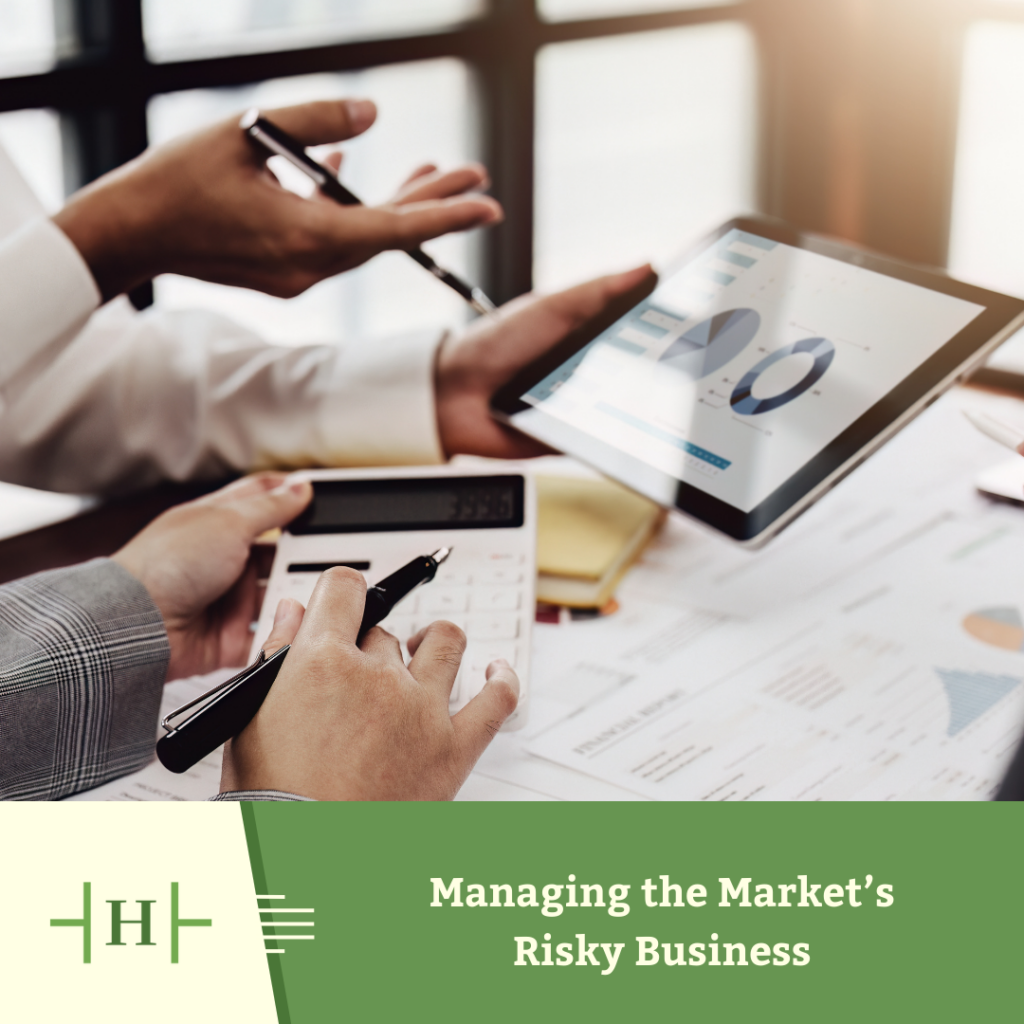March 18, 2024


Welcome to the next installment in our series of Hiley Hunt’s Evidence-Based Investment Insights: Managing the Market’s Risky Business
In our last piece, “The Full-Meal Deal of Diversification,” we described how effective diversification means more than just holding a large number of accounts or securities. It also calls for efficient, low-cost exposure to a variety of assets from around the globe. Now, let’s expand on the benefits of diversification, beginning with its ability to help you better manage investment risks.
There’s Risk, and Then There’s Risk
Before we even have words to describe it, most of us learn about risk as toddlers, when we tumble into the coffee table or reach for that hissing cat’s tail. We learn where risks are found, how to avoid them when possible, and which ones may be worth taking anyway.
To understand, avoid, and manage investment risks, it helps to know there are two main types: avoidable concentrated risks and unavoidable investment risks.
Avoidable Concentrated Risks
Concentrated risks are the ones that wreak havoc on particular stocks, bonds, or sectors. Even in a bull market, one company can experience an industrial accident, causing its stock to plummet. A municipality can default on a bond even when the wider economy is thriving. A natural disaster can strike an industry or region while the rest of the world thrives.
In the science of investing, concentrated risks are considered far more avoidable. Bad luck still happens. But we are granted a super power for minimizing its impact on our investments: You can diversify your holdings widely and globally, as just described. When you are well diversified, if some of your holdings are affected by a concentrated risk, you are much better positioned to offset the damage done with plenty of other holdings.
Unavoidable Investment Risks
Unavoidable investment risks are the systemic kind that apply to large swaths of the market. If concentrated risks are like bolts of lightning, investment risks are like downpours, in which everyone gets wet.
Put another way, systemic investment risks are the ones you face by investing in capital markets to begin with. If you stuff your cash in a safety deposit box, it will still be there the next time you visit it. (It is likely to buy you less due to inflation, but that’s a different risk, for discussion on a different day.) Invest in the market and, presto, you’re exposed to investment risk.
Risks and Expected Rewards
Hearkening back to our past conversations on group intelligence, the market as a whole knows the differences between avoidable and unavoidable risks, and sets prices accordingly. This wisdom informs us on how to manage our own investments.
Managing concentrated risks: If you try to beat the market by chasing particular stocks or sectors, you are exposing yourself to concentrated risks you could instead minimize through diversification. As such, you cannot expect to be consistently rewarded for taking on concentrated risks.
Managing investment risks: Every investor faces investment risks that cannot be “diversified away.” When these overall risks are on the rise, those who stay invested with steely resolve can expect to more fully capture future expected returns as markets recover and likely grow. However, sitting tight during risky times when others are selling out is easier said than done. That’s why you want to take on as much, but no more investment risk than you need to, in pursuit of expected returns. Diversification becomes a “dial” for setting the right volume of investment-related risk/reward exposure for your individual goals.
Your Take-Home
Diversification plays a key role in managing your investment experience. It’s vital for minimizing concentrated risks. It also helps you fine tune your desired exposure to investment risks and expected rewards, to reflect your own financial goals.
This sets us up for addressing another powerful benefit of diversification: smoothing out the ride along the way.